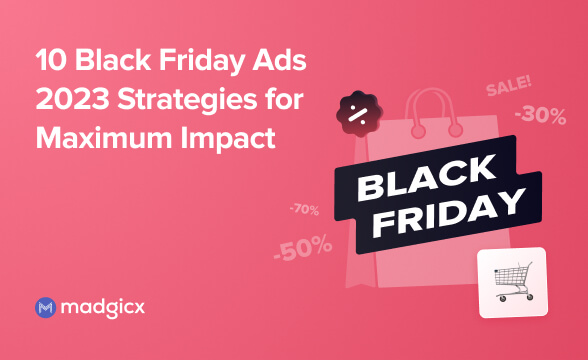Creating and managing ad sets can be quite a challenge. Learn everything you need to know about creating and optimizing your ad sets with this post.
Facebook advertising has become an essential tool for businesses looking to reach a wider audience and increase brand visibility.
In order to maximize the effectiveness of Facebook ads, understanding the role of ad sets and ad campaigns is crucial.
This blog post will guide you through the ins and outs of ad sets and campaigns, from their basic definitions to advanced techniques that will help you optimize your advertising efforts.
Let's dive in!
What is an ad campaign?
An ad campaign is a series of coordinated advertisements (short form “ads”) that share a common theme, message, or goal.
In the context of Facebook advertising, ad campaigns serve as the umbrella under which individual ad sets and ads are organized. The main job of the campaign is to contain your ads and ad sets and group them together by a main goal, like generating sales or leads.
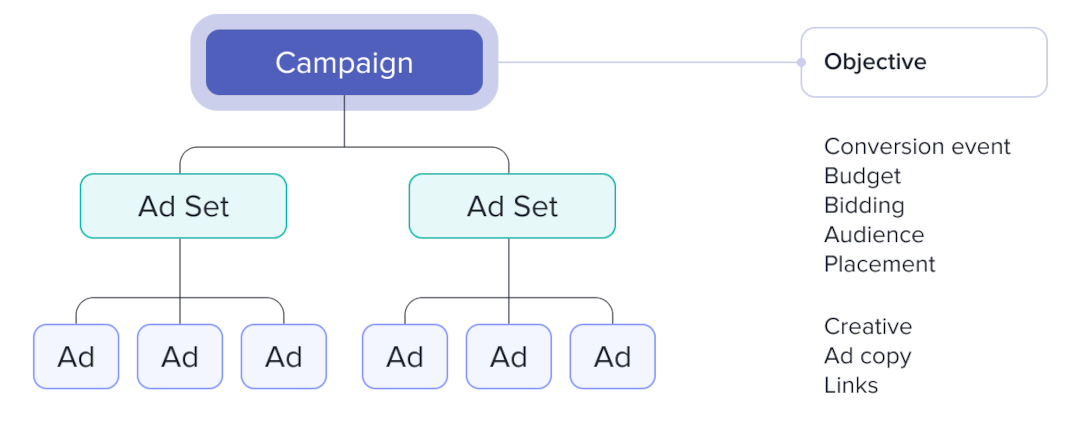
Ad campaigns help advertisers manage their ads more efficiently and measure the performance of their overall marketing strategy.
Creating an ad campaign
To create a new ad campaign on Facebook, start by navigating to the Ads Manager and clicking on the “Create” button. This will open a new window where you'll be able to define your campaign objective, target audience, budget, and more.

Defining campaign objectives and goals:
Facebook offers a variety of campaign objectives, such as awareness, traffic, sales, and engagement. Choose the campaign objective that aligns with your overall marketing goals.
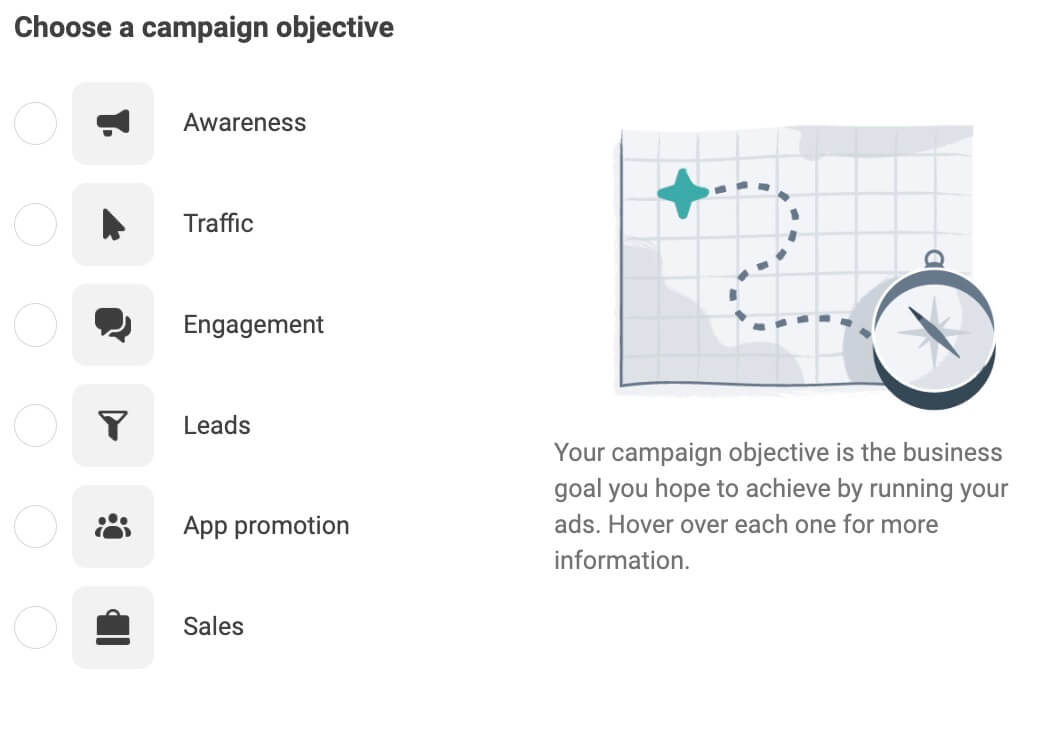
- Sales. The sales objective aims to drive purchases or conversions on your website, in your app, or through other means like Messenger. It targets potential customers who are most likely to complete a purchase or desired action, such as signing up for a service, registering for an event, or downloading a resource.
- Leads. The leads objective focuses on generating leads for your business, such as collecting contact information from potential customers who show interest in your product or service. This can be achieved through lead generation forms on Facebook, which allow users to share their information without leaving the platform.
- Awareness. The awareness objective is designed to increase your brand's visibility and reach among your target audience.
- Traffic. The traffic objective aims to drive users to a specific destination, such as a website. It is ideal for increasing visits to your online properties or driving users to specific content or promotions.
- Engagement. The engagement objective focuses on increasing interactions with your content, such as likes, comments, shares, event responses, or offer claims. This objective is useful for boosting the visibility of your posts, promoting events, or encouraging users to claim special offers.
- App Promotion. The app promotion objective, also known as app installs, is designed to drive the installation of your mobile or desktop app. It targets users who are most likely to download and engage with your app, and can also be used to encourage existing users to open and use the app more frequently.
What is an ad set?
An ad set is one step down from a campaign and contains a group of ads that share the same targeting, budget, and placement options.
Ad sets allow you to test different targeting options and placements to optimize your campaign's performance.
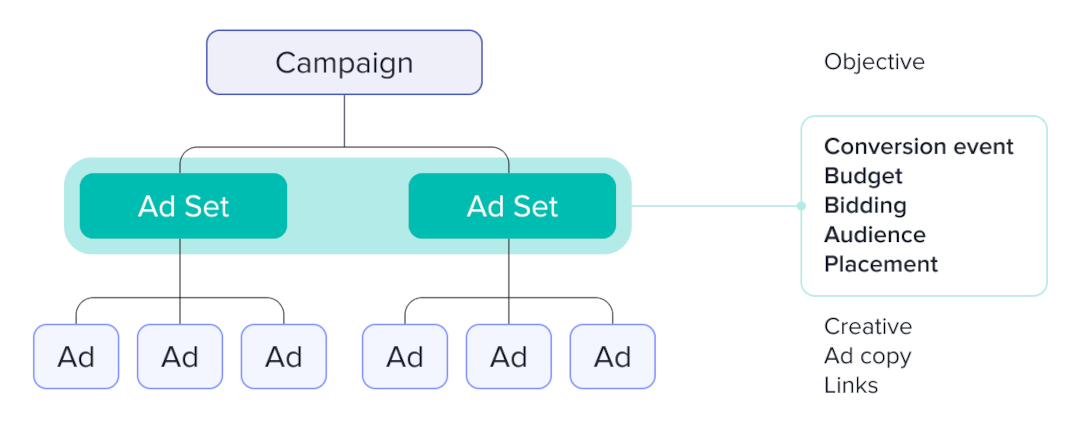
Creating an ad set
Setting up an ad set
After creating your campaign and clicking next, you'll be directed to the ad set creation step. There are a few different options here to cover.
Selecting the conversion location, performance goal, and conversion event:
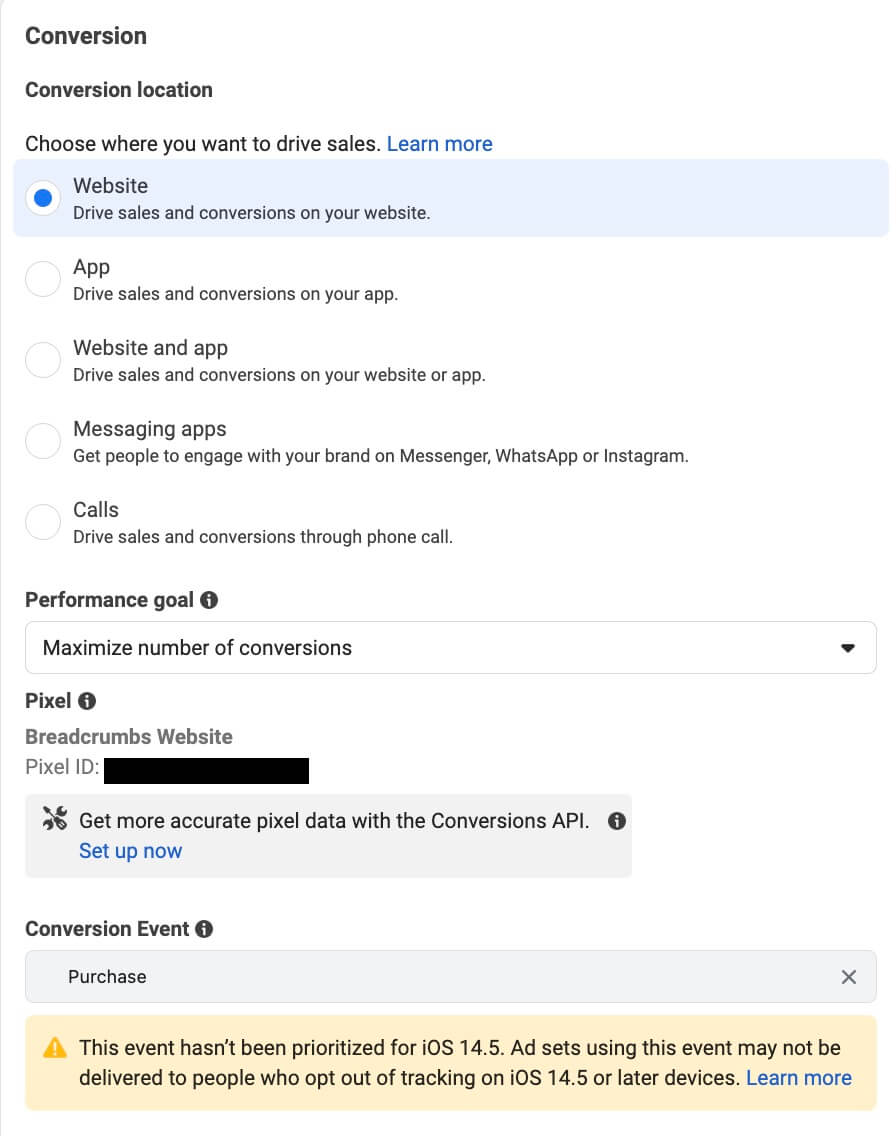
We first need to tell Facebook where this sale or conversion will happen. For us, we're looking for sales on our website.
Next, select the performance goal. While there's a lot of debate here around which optimization you should use, maximizing conversions is the default option we'll be going with.
Finally, You'll need to choose your Facebook Pixel and the Pixel event you want to count as the conversion. Again, we'll be going with Purchase.
If you haven't heard of the Facebook Pixel or haven't set up yours just yet, make it a priority asap, as you won't be able to track your sales or conversions otherwise. We have a complete guide available here for free.
Budgeting for ad sets
As with life, there's usually a cost to everything—and ads are no different.
At this stage, we now need to select the budget for our ad set. Now, don't be fooled—there's no one-size-fits-all number for how much you should spend on your ads.
In reality, your Facebook ad costs can vary due to target audience, goal, industry, niche, you name it. You’ll also have to decide which actions you’re bidding on and know how much these typically cost to prevent underbidding.
It can also depend on if you’re using lifetime budgeting (one set amount that’s spent during the entire campaign) or daily budgets (a set amount your ads will spend each day).
That being said, Madgicx has a free Facebook ad cost calculator that can help you figure out how much you should spend to achieve your goals by asking a few simple questions.
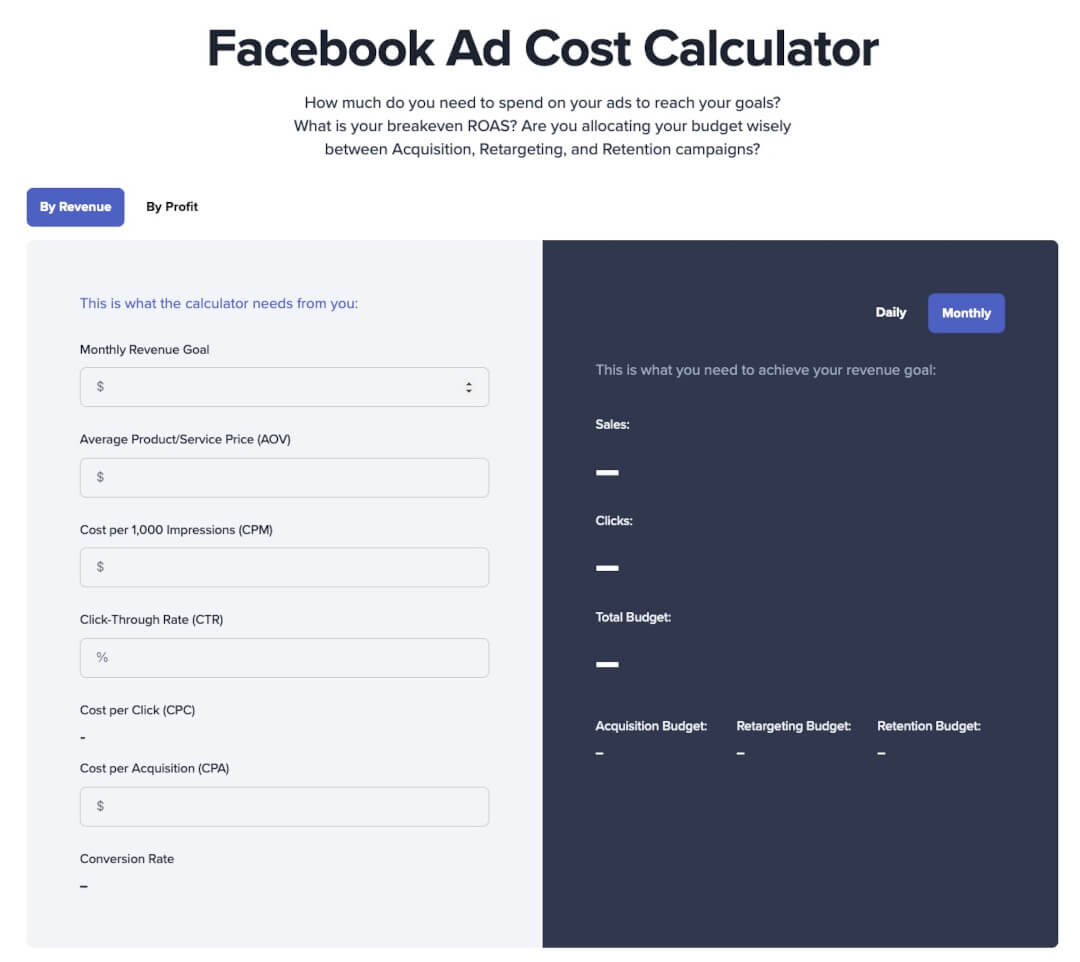
Once you input your revenue goals, product price, and baseline Facebook ad metrics, you can use that number to fill out your budget field and continue on.
Selecting your ad set audience
In the ad set creation window, you'll have the opportunity to define the target audience for your ads.
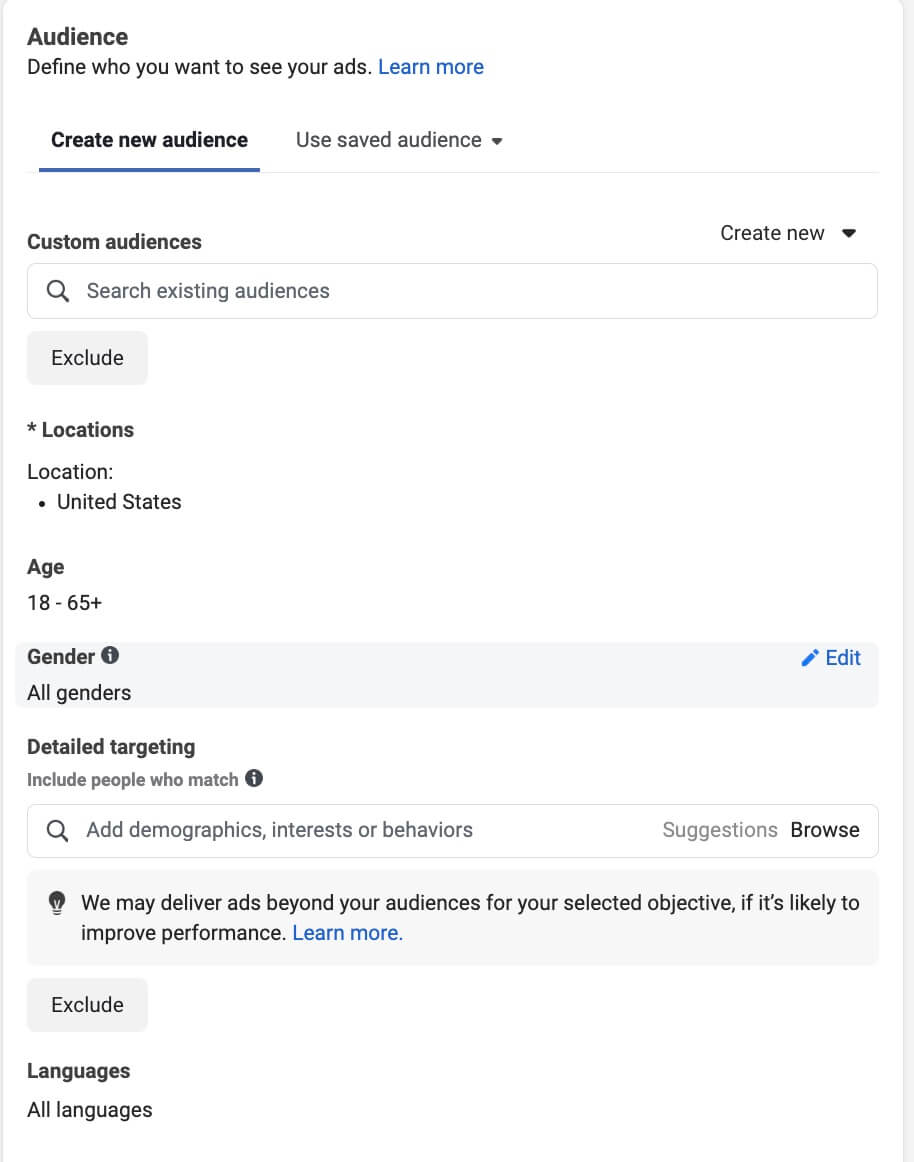
Facebook ad targeting works by allowing advertisers to reach specific groups of users based on various criteria, ensuring that their ads are shown to the most relevant audience.
Here's a quick overview of the main targeting options available on Facebook:
- Interest/demographic targeting: This targeting option lets you define your audience based on demographics, interests, behaviors, and location. Demographics include age, gender, education, job title, and more. Interests are determined by what users engage with on Facebook and can include hobbies, entertainment preferences, and shopping habits. Behaviors refer to users' actions, such as purchasing habits, device usage, and travel preferences. Location targeting can be as broad as a country or as specific as a zip code.
- Custom audiences: Custom audiences allow you to target users who have already interacted with your business, either on or off Facebook. You can create Custom Audiences using customer data (such as email addresses or phone numbers), website visitors (tracked via Facebook Pixel), app users, or engagement on Facebook or Instagram (likes, comments, video views, etc.).
- Lookalike audiences: Lookalike audiences help you reach new users who share similar characteristics with your existing customers or audience. Facebook uses its algorithm to analyze your source audience (e.g., custom audience, website visitors, or Page fans) and then finds users with similar traits, increasing the likelihood that they will be interested in your products or services.
To be completely honest, the type of targeting you use here can drastically differ for your audience, campaign goal, and funnel stage—and we could easily add 3,000 words to this article based on that alone.
If you want to learn more about how to create the perfect audience for your goals, you'll find everything you need in this post.
Ad placements
When setting up your audiences, you’ll also need to decide where your ads show up around the platform—aka your ad placement.
Facebook ad placement is the strategic positioning of advertisements on Facebook's platform, including its family of apps like Instagram, Messenger, and Audience Network.
When you create your campaign, you’ll have two choices for placements: manual or advantage+.

If you’re just starting out with ads, chances are you don’t have enough data yet to know which placements work the best for you. Until then, you can use the advantage+ option and move forward, and Facebook will optimize your ads to show them in the places where they get the best results.
If you’ve been running ads for a while, you can review your placement performance and follow our ad placement guide to learn how to choose from the 23 current ad placement options.
What is an ad?
Moving down our chart, we come to the final part—the ads themselves.
Ads refer to the visual element of your campaign and are a combination of graphics/video, copy, and offer.
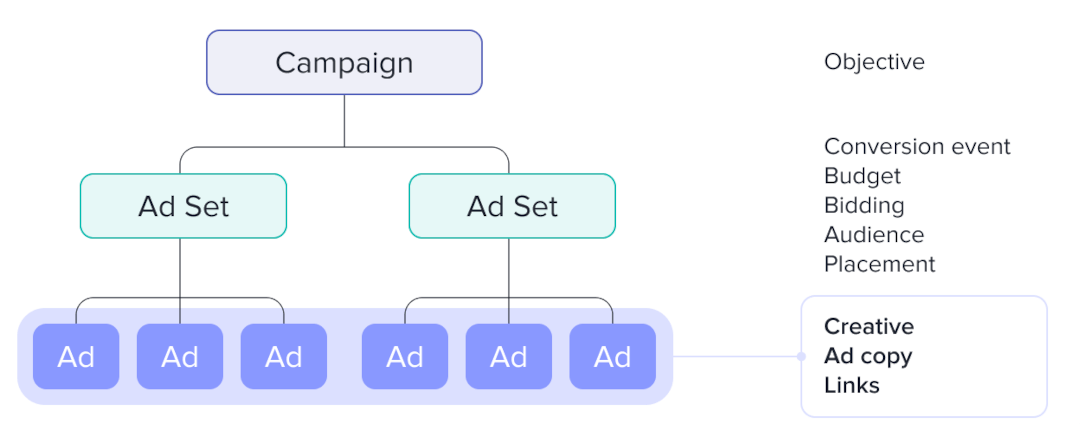
A well-crafted ad captures users' attention, communicates your message clearly, and encourages them to take action. High-quality ads also result in better ad performance, lower cost-per-click (CPC), and higher return on investment (ROI), as Facebook's algorithm rewards engaging ads with greater visibility.
Creating an ad
After you create your ad sets, you’re ready for the final part—creating those ads!
First up, you need to select the Facebook and Instagram accounts you want your ads to appear under.

The next step is the ad setup. Here, we start off by choosing how we’re going to create our ads (one by one for now) and what type of ad we’d like to create.
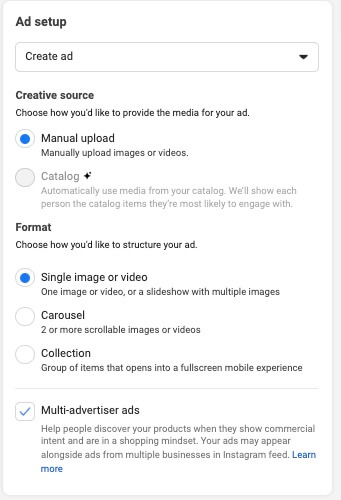
For the purpose of these instructions, we’re going with a single-image ad. However, there are several other ad formats that can generate even better results for your business.
Finally, we can get to the fun part—designing our creative.
Here we’ll be selecting the graphics or videos for our ad (which is again where our placements from before come into play) as well as adding our written elements (headline, description, primary text).
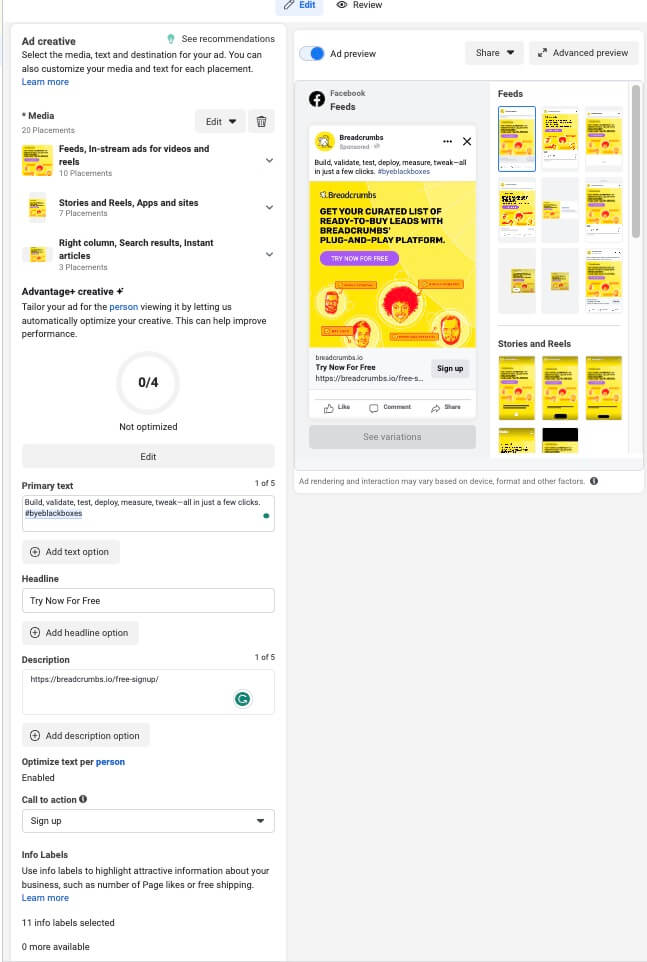
Writing Facebook ad copy can be an entirely different beast to tame, so make sure to study up on those best practices before you hit publish for the first time.
And lastly, we need to tie up the loose ends for our ad. We will do this by selecting the ad destination (aka where clicking on the ad takes them), adding additional translations, and making sure we’re using the right Pixel for tracking.
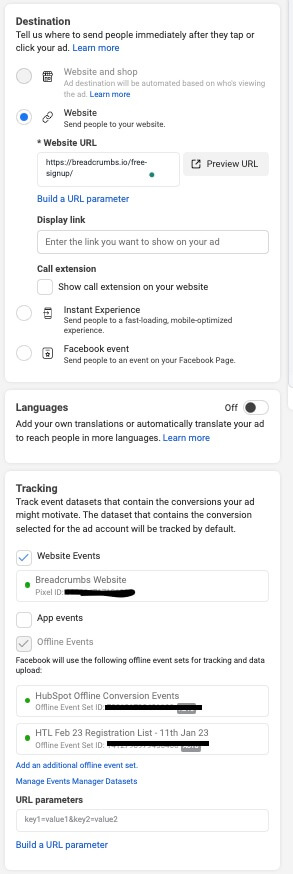
Et voila! Your shiny new ad is ready to be launched into the world….
After you read our tips and tricks for creating your campaigns and ad sets in the next section, of course. ;)
Ad set optimization
Optimizing your ad sets is crucial for improving the performance of your Facebook ads.
Through A/B testing, monitoring ad set performance, and making necessary tweaks, you can maximize your return on investment (ROI) and ensure your campaigns reach their full potential.
A/B testing
A/B testing, or split testing, is the process of comparing two or more variations of an ad set to determine which one performs better.
By systematically testing different variables, such as audience targeting, ad creatives, and bidding strategies, you can identify the most effective combination for your campaign goals.
To get started with A/B testing, you need to:
- Create multiple ad sets with slight variations in targeting, or run ad creative tests
- Run the tests simultaneously for a specific period, ensuring you have a sufficient sample size for reliable results.
- Analyze the data and determine which ad set yields the best results based on your campaign objectives.
- Implement the winning variation and continue testing to further refine your ad strategy.
Ad set performance monitoring
Regularly monitoring the performance of your ad sets is essential for identifying areas of improvement and making informed decisions. Key performance indicators (KPIs) to track include:
- Click-through rate (CTR)
- Conversion rate
- Cost per click (CPC)
- Cost per purchase (CPA)
- Return on ad spend (ROAS)
Utilize a Facebook ad tool or dashboard reporting software to monitor these metrics and compare them against your initial goals to assess the overall success of your ad sets.
Ad campaign and ad set best practices
To streamline your Facebook advertising efforts, follow these best practices for ad campaign and ad set management.
Ad campaign and ad set naming conventions
Implementing a consistent naming convention for your ad campaigns and ad sets is crucial for efficient organization and easy analysis. Consider including elements such as targeting, ad format, and campaign objective in your naming structure.
Ad campaign and ad set structure organization
Proper organization of your ad campaigns and ad sets is essential for better management and analysis. Here are some tips:
- Group similar ad sets (for example, by funnel stage or marketing campaign) within a single campaign to maintain a clear structure.
- Adjust your ad set structure based on your campaign objectives.
Ad set duplication for testing
Duplication is a helpful feature in Facebook Ads Manager that allows you to create copies of ad sets for testing. You can use the ad set duplication feature to:
- Test different targeting options, ad creatives, or budgets with minimal effort.
- Maintain the original ad set as a control group for accurate comparison.
Advanced ad campaign and ad set techniques
For more sophisticated Facebook advertising, consider implementing these advanced campaign and ad set tips.
Use lookalike audiences where possible
Lookalike audiences is a targeting method that allows advertisers to reach new users who share similar characteristics with their existing customers or audience. The idea is to expand your reach to potential customers who are likely to be interested in your products or services based on their similarity to your current audience.
To create a lookalike audience, you first need a source audience, which can be a Custom Audience (based on customer data, website visitors, or app users), fans of your Facebook Page, or users who have engaged with your content on Facebook or Instagram. Facebook's algorithm then analyzes the source audience and identifies common attributes among the users, such as demographics, interests, and behaviors.
Once the analysis is complete, Facebook generates a new audience of users who closely resemble your source audience. You can then target this Lookalike Audience with your ads, increasing the likelihood of reaching people who are genuinely interested in your business.
Experiment with retargeting and custom audiences
Custom audiences, on the other hand, allow you to directly reach groups of people who have previously interacted with your business, either on or off Facebook. This targeting approach helps create highly relevant ad campaigns, as it focuses on users who have already shown interest in your products or services.
By implementing a full-funnel campaign approach and using game-changing formats like dynamic product ads, you can create a sustainable sales process that turns cold leads into repeat buyers and increase your campaign ROI.
Conclusion
Facebook ad campaigns and ad sets play a vital role in the success of your advertising efforts. By focusing on ad set optimization, implementing best practices for ad campaign and ad set management, and utilizing advanced techniques like lookalike audience creation and custom audience targeting, you can significantly improve your ad performance and achieve a higher ROI.
In summary, remember to:
- Test and optimize your ad sets through A/B testing, performance monitoring, and tweaking.
- Follow best practices for ad campaign and ad set naming conventions, structure organization, and duplication.
- Leverage advanced techniques like lookalike audience creation and custom audience targeting.
By incorporating these strategies and recommendations, you'll be well-equipped to create successful and high-performing Facebook ad sets and campaigns.
Don't be afraid to experiment and continually refine your approach to discover the most effective tactics for your specific business and audience.
Creating and managing ad sets and campaigns can eat up your time. Madgicx makes it easy to manage all of them in one place: filter, analyze, and make changes to multiple ad sets and campaigns in just a few clicks!
Tory is a digital marketing specialist and the current Marketing Manager of Breadcrumbs.io. She's been featured in various high-profile marketing blogs like Hootsuite, AdEspresso, and Databox and holds certificates for both Google and Facebook Ads. In her spare time, she gardens and paints from her house in the Florida panhandle.








